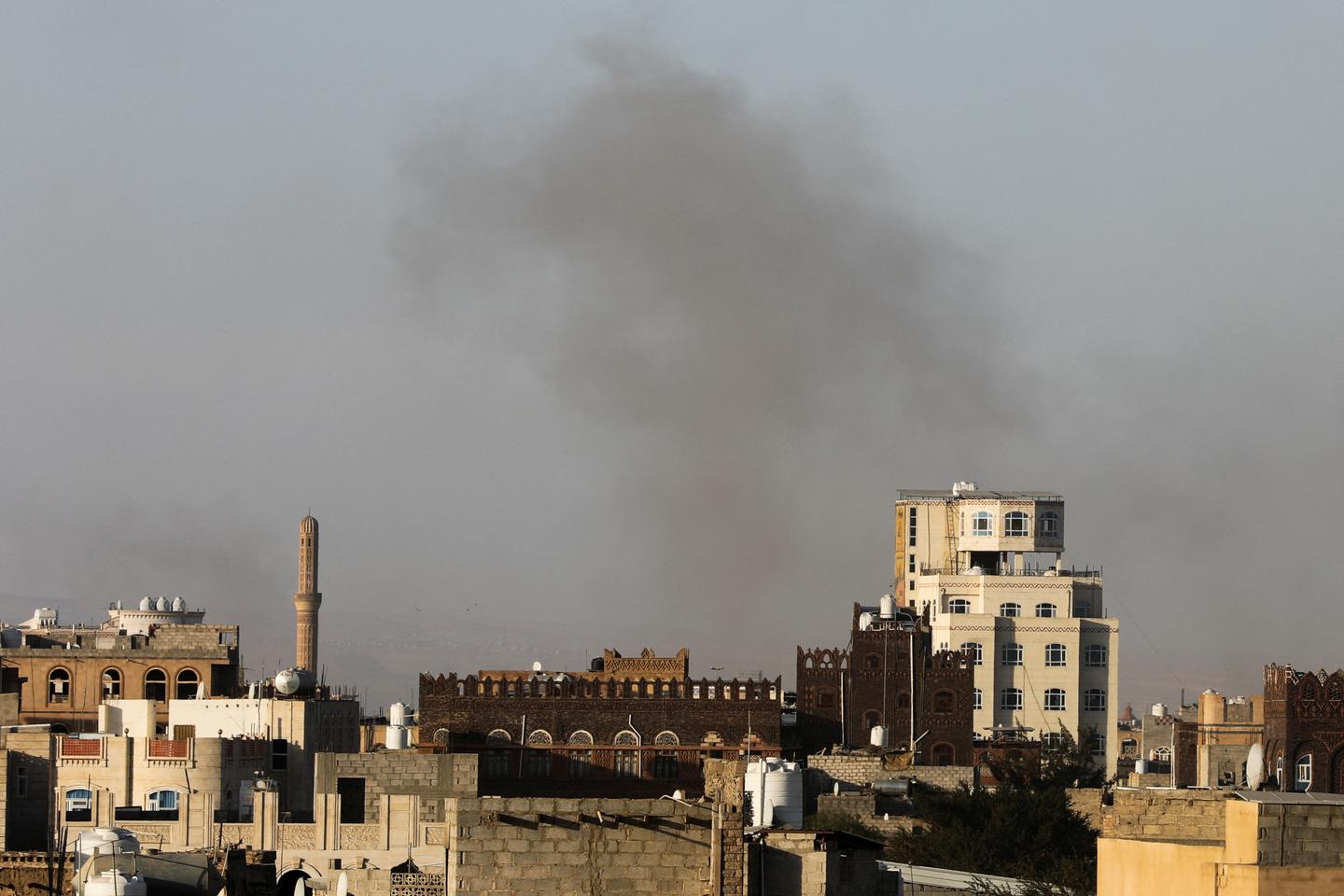Israeli air strikes pummelled Sanaa’s international airport and other targets in Yemen on Thursday, December 26, a day after the latest attacks on Israel by Iran-backed Huthi rebels. The strikes targeting the airport, military facilities and power stations followed rising hostilities between Israel and the Huthis, part of Iran’s “axis of resistance” alliance against Israel.
The rebel-held capital’s airport was struck by “more than six” attacks with raids also targeting the adjacent Al-Dailami air base, a witness told AFP. A series of strikes were also fired at a power station in Hodeida, a witness and the Iran-backed Huthis’ official Al-Masirah TV station said. Huthi spokesperson Mohammed Abdulsalam called the strikes, which came a day after the Huthis fired a missile and two drones at Israel, “a Zionist crime against all the Yemeni people.”
The Israeli military said Israeli “fighter jets conducted intelligence-based strikes on military targets belonging to the Huthi terrorist regime.” The targets included “military infrastructure” at the airport and power stations in Sanaa and Hodeida, as well as other facilities at Hodeida, Salif and Ras Kanatib ports, an Israeli statement said. “These military targets were used by the Huthi terrorist regime to smuggle Iranian weapons into the region and for the entry of senior Iranian officials,” the statement said. “The Huthi terrorist regime is a central part of the Iranian axis of terror,” it added.
Netanyahu’s warning
On Saturday, days ahead of Wednesday’s missile and drone strike on Israel, 16 people were wounded by a Huthi attack in Tel Aviv. The incident prompted a warning to the Huthis from Israeli Prime Minister Benjamin Netanyahu, who said he ordered the destruction of the rebel group’s infrastructure. “I have instructed our forces to destroy the infrastructure of Huthis because anyone who tries to harm us will be struck with full force,” Netanyahu said in parliament.
The Huthis have fired a series of missiles and drones at Israel since the eruption of war in Gaza in October last year, claiming solidarity with the Palestinians. The rebels, part of Iran’s “axis of resistance” against Israel and the United States, have also waged a months-long campaign against shipping in the Red Sea and Gulf of Aden.
Scores of drone and missile attacks on cargo ships have prompted a series of reprisal strikes by US and sometimes British forces. Israel has also previously struck the Huthis in Yemen, including hitting ports and energy facilities, after rebel attacks against its territory. In July, a Huthi drone attack on Tel Aviv killed an Israeli civilian, prompting retaliatory strikes on Hodeida.
Last week, before the latest volley of attacks, Netanyahu said the Huthis would “pay a very heavy price” for their strikes on Israel. “After Hamas, Hezbollah and the (Bashar al-)Assad regime in Syria, the Huthis are almost the last arm of Iran’s axis of evil,” he said. The Huthis control large parts of Yemen, including much of its most populated areas, after seizing the capital and ousting the internationally recognized government in September 2014.
A Saudi-led coalition launched a military campaign to dislodge them in March 2015, triggering a war that has caused one of the world’s worst humanitarian crises. Sanaa’s airport, which reopened to international flights after a six-year gap in 2022, offers a regular service to Jordan’s capital, Amman, on the home-grown Yemenia airline.

